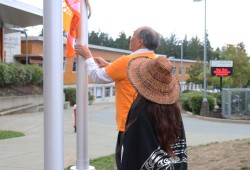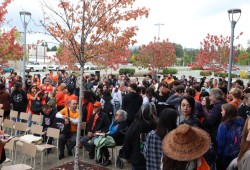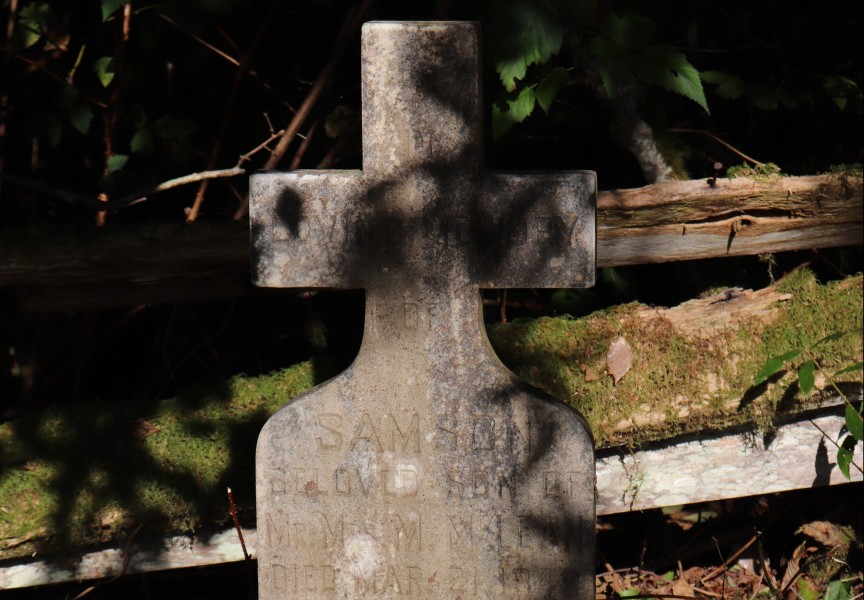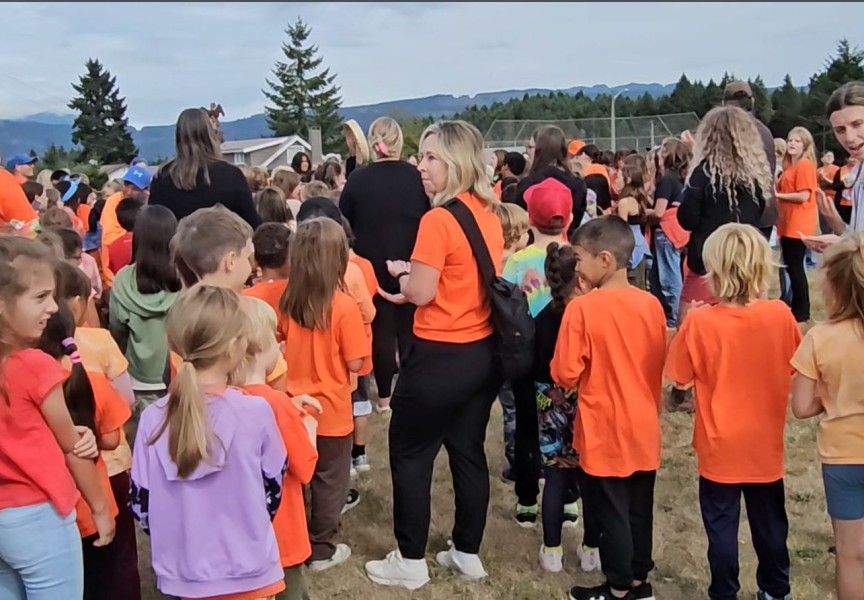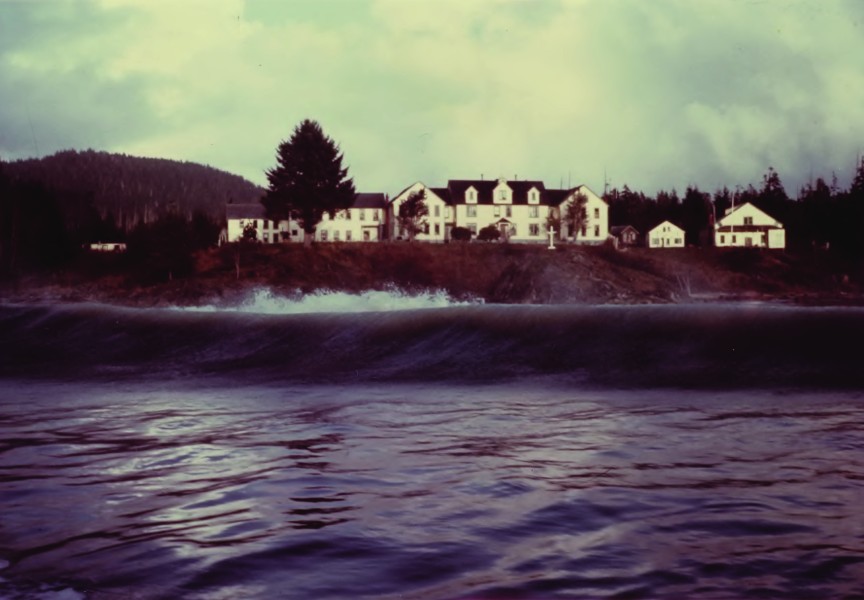Roughly six hundred students gathered outside ADSS on Sept. 28, where the residential school survivors' flag flew for the first time, while the Canadian flag rose from half mast to full.
For School District 70 (SD 70), the survivors flag now has a permanent home among their schools.
“This flag will be here for eternity,” said Tim Davie, SD 70 superintendent, “recognizing the work that’s also taking place in terms of moving forward and reconciliation across the district.”
According to the National Centre for Truth and Reconciliation, in response to the discoveries of unmarked graves on residential schools grounds in 2021, the bright orange survivors flag was designed in consultation with former residential school students across Canada, including Nuu-chah-nulth survivors.
Jeff Cook, a former student at the Alberni Indian Residential School, and his granddaughter Saryta Dick, a Grade 8 student at ADSS, were asked to raise the survivors flag.
“For me it was an honor,” said Cook. “It's nice that they finally are starting to recognize survivors, as who we are [and] what we've been through and learn from the culture and history of what we went through.”
“I raised the flag halfway, and then she took over - that's to signify the transferring of knowledge and power to the younger generation and learning experience,” he added.
For Dick, she said it was an honor to raise the survivor’s flag with her grandfather.
The Canadian flag, which had been at half mast since 2021 in recognition of the 215 unmarked graves discovered at Kamloops Indian Residential School, was raised by Wally Samuel, his niece and grandson.
In May of 2022 the elder’s council wrote to SD 70 to request that the Canadian flag remain at half mast in recognition of the research and scanning that Tseshaht First Nation was to start at Alberni Indian Residential School (AIRS), said Davie.
It was also important to the elder’s council that these events be led by survivors and their family, said Davie.
“This is a painful time, a painful day for a lot of our survivors, and a lot of the children of survivors [and] grandchildren. They see that change in their parents and their grandparents as this day starts coming up,” said Brandi Lauder, elected chief councillor of Hupačasath First Nation. “We stand with them, we walk with them, and we help carry the weight that they have had to burden their whole lives.”
“Some of you along here will eventually sit on these councils and be making these decisions,” said Lauder as she spoke of the high school students. “You will be going forward to make a better life for everyone.”
“I still get emotional about it,” said Cook. “A lot of people still don't want to talk about it… because it was so traumatic, but I survived it and I can talk about it now.”



